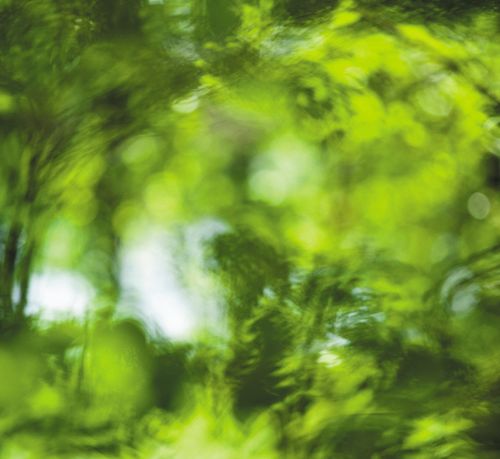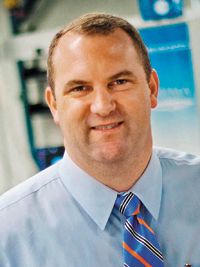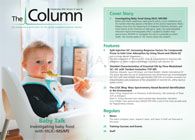The LCGC Blog: Mass Spectrometry-Based Bacterial Identification in the Environment
Kevin A. Schug discusses how matrix-assisted laser desorption–ionization time-of-flight mass spectrometry (MALDI-TOF-MS) is one of the most versatile tools for fingerprinting mixtures.
Photo Credit: Sven Hagolani/Getty Images

Kevin A. Schug, Department of Chemistry & Biochemistry, The University of Texas (UT) at Arlington, USA.
Kevin A. Schug discusses how matrix-assisted laser desorption–ionization time-of-flight mass spectrometry (MALDI-TOF-MS) is one of the most versatile tools for fingerprinting mixtures.
Matrix-assisted laser desorption–ionization time-of-flight mass spectrometry (MALDIâTOF-MS) (1–3) is actually one of the most versatile tools for fingerprinting mixtures. A sample of interest is coâcrystallized with a matrix (usually a small organic acid) on a conductive target plate. A series of laser pulses is fired at the mixture. The matrix absorbs the laser light energy, and while matrix and sample molecules are ablated into the gas phase, the matrix transfers charge to the sample molecules to create analyte ions. These ions are then accelerated into the flight tube, where they are separated based on their mass-to-charge ratio. MALDI-TOFâMS can be used to qualitatively analyze virtually any analyte type, including small molecules, lipids, polymers, carbohydrates, and proteins. However, it is not a very good quantitative analysis tool. Relative intensities of ions can be used to help differentiate samples, but significant replication in both number of sample spots and number of laser shots is needed to reduce error and to obtain reliable average intensity values.
We have used MALDI-TOF-MS in the past for multiple applications, including the analysis of biodegradable polymers (4,5), fingerprinting of crude oil mixtures (6), and differentiation of mosquitoes’ age and sex based on lipids extracted from their exoskeleton (7,8). In the latter two applications, we relied heavily on the use of multivariate statistics to perform feature selection, where the most important signals differentiating different classes of samples were determined, and then various means to visualize the differentiation of the mixtures. It is another example of the power of chemometrics for interpreting complex data sets, as I wrote about recently (9).
More recently, we have turned our attention to the use of MALDI-TOF-MS for microorganism identification (10). This technique has proven to be a very worthy alternative to traditional biochemical methods. Although the initial capital investment into the instrumentation is large, the MS-based tests are fairly quick and easy. The technique has grabbed a foothold in the clinical analysis arena, where the rapid diagnosis of emerging drug-resistant bacteria has become an especially strong interest. Microorganism identification is most commonly performed based on the generation of protein fingerprints from cultured samples. Very large databases of spectral libraries exist for matching bacteria with experimentally generated protein mass spectral fingerprints. Some limitations do still exist when mixed colonies are present, since overlapping protein profiles complicate fingerprint matching.
The use of MALDI-TOF-MS in environmental microbiology is quite a different story. We recently reviewed the state-of-the-art in this area (11). While many of the microorganisms that can be found in the clinic are also present in the environment, there are additional challenges. The variety of organisms and the variety of conditions (water, soil, sludge, and so forth) where they live vary greatly. Thus, sample preparation strategies to isolate bacteria of interest can vary. The next challenge is that only about 1% of environmental bacteria have been shown to be culturable; many organisms need different media for growth, and knowing what conditions to choose is a major difficulty. Even if the bacteria are successfully prepared and cultured, and then applied to the target plate for MALDI-TOF-MS analysis, there are still further challenges. One of the most oftâstated shortcomings in the literature is that current databases, designed with the clinic in mind, do not contain library entries for many environmental organisms. These libraries need to be built before the technique can be a reliable mainstream approach.
These challenges point to a field that is still maturing. However, pursuit of advancement in this research area holds significant promise. For example, bacteria that live in areas that have been contaminated by anthropogenic activities may be developed into new tools for bioremediation. They can live in the presence of the contaminant and perhaps they can also use it as a food source.
In our research related to unconventional oil and natural gas (UOG) extraction processes, the microbiome present in waters associated with the process is under-studied. With a better understanding of the microbiological population in waters used for hydraulic fracturing, a more informed selection of biocides can be made for disinfection processes. I also understand that microbial growth can be one reason for decreased oil and gas production from a UOG well over time. With a better understanding of the microbial community, the UOG process as a whole can be made more efficient in many ways. We have just scratched the surface on the possibilities. Many researchers have started using MALDIâTOFâMS for environmental applications. While it looks like biochemical methods will still have to be commonly used alongside the MSâbased methods, progress always takes time. As more protocols are developed and libraries are generated and disseminated, we should see more reliance on the MS strategies. Time will tell.
References
- M. Karas, D. Bachmann, and F. Hillenkamp, Anal. Chem.57(14), 2935–2939 (1985).
- M. Karas, D. Bachmann, U. Bahr, and F. Hillenkamp, Int. J. Mass Spectrom. Ion Processes78, 53–68 (1987).
- K. Tanaka, H. Waki, Y. Ido, S. Akita, Y. Yoshida, T. Yoshida, and T. Matsuo, Rapid Commun. Mass Spectrom.2(20), 151–153 (1988).
- J. Yang, Y. Zhang, S. Gautam, L. Liu, J. Dey, W. Chen, R.P. Mason, C.A. Serrano, K.A. Schug, and L. Tang, Proc. Nat. Acad. Sci.USA106, 10086–10091 (2009).
- C.A. Serrano, Y. Zhang, J. Yang, and K.A. Schug, Rapid Commun. Mass Spectrom.25, 1152–1158 (2011).
- H.P. Nguyen, I.P. Ortiz, C. Temiyasathit, S.B. Kim, and K.A. Schug, Rapid Commun. Mass Spectrom.22, 2220–2226 (2008).
- E. Suarez, H.P. Nguyen, I.P. Ortiz, K.J. Lee, S.B. Kim, J. Krzywinski, and K.A. Schug, Anal. Chim. Acta 706, 157–163 (2011).
- Y. Kim, K.A. Schug, and S.B. Kim, Chemometr. Intel. Lab. Sys.146, 322–328 (2015).
- K.A. Schug, The LCGC Blog 14 June 2016. http://www.chromatographyonline.com/value-chemometrics-and-experimental-design-analytical-chemists?topic=337&eid=173052608&bid=1435255
- V. Havlicek, K. Lemr, and K.A. Schug, Anal. Chem.85, 790–797 (2013).
- I.C. Santos, Z.L. Hildenbrand, and K.A. Schug, Analyst141, 2827–2837 (2016).

Kevin A. Schugis a Full Professor and Shimadzu Distinguished Professor of Analytical Chemistry in the Department of Chemistry & Biochemistry at The University of Texas (UT) at Arlington. He joined the faculty at UT Arlington in 2005 after completing a Ph.D. in Chemistry at Virginia Tech under the direction of Prof. Harold M. McNair and a post-doctoral fellowship at the University of Vienna under Prof. Wolfgang Lindner. Research in the Schug group spans fundamental and applied areas of separation science and mass spectrometry. Schug was named the LCGCEmerging Leader in Chromatography in 2009 and the 2012 American Chemical Society Division of Analytical Chemistry Young Investigator in Separation Science. He is a fellow of both the U.T. Arlington and U.T. System-Wide Academies of Distinguished Teachers.

The LCGC Blog: Historical (Analytical) Chemistry Landmarks
November 1st 2024The American Chemical Society’s National Historic Chemical Landmarks program highlights sites and people that are important to the field of chemistry. How are analytical chemistry and separation science recognized within this program?






